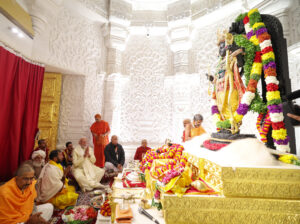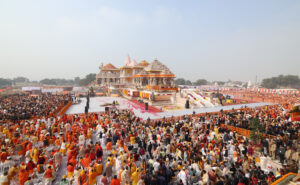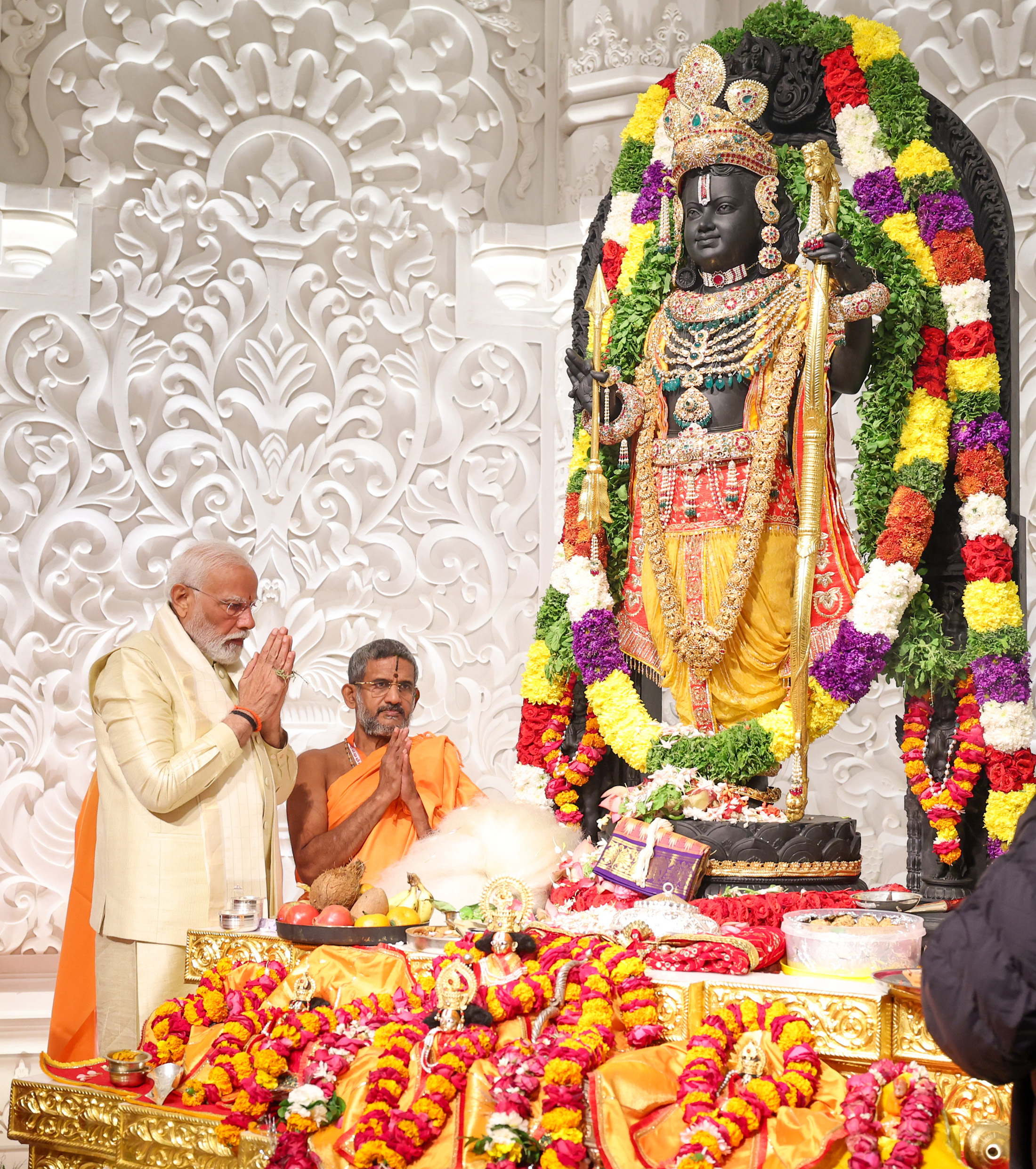The News Freedom
Ayodhya, January 22
In a ceremony rich in symbolism and unity, the Ayodhya Ram Janmbhoomi Mandir was formally consecrated on Monday, drawing representatives from various faiths and walks of life to mark a turning point in the holy city’s history.
The ceremony, witnessed by thousands of devotees and broadcast nationwide, marks the culmination of a decades-long saga that saw legal battles and social tensions. Now, as the gates of the Ayodhya Ram Janmbhoomi Mandir officially open, a chapter of unity and hope dawns for the holy city and India as a whole
Prime Minister Narendra Modi, adorned in traditional garb, participated in the ‘Pran Pratishtha’ ritual, breathing life into the idol of Ram Lalla – Lord Ram’s child form. His presence alongside religious leaders and representatives of tribal communities underscored the ceremony’s inclusive message.

The imposing temple, a testament to India’s ancient architectural prowess, stretches 380 feet long and 161 feet tall, its 392 pillars and 44 doors intricately carved with stories of deities. Within the heart of the ground floor lies the sanctum sanctorum, housing the idol of Ramlalla, while a staircase adorned with a lion figure leads to the eastern entrance.
Beyond the temple itself, the complex boasts a historical well believed to date back to the Ramayana era, a restored ancient Shiva temple, and a statue of Jatayu, the mythical bird ally of Lord Rama.

Sustainability and tradition stand as core principles. The foundation, resembling natural rock, sits on a thick layer of roller-compacted concrete, while iron is notably absent from the structure. A granite plinth protects against moisture, and the complex boasts its own sewage, water treatment, and power facilities. Notably, the construction employed primarily traditional Indian techniques.
